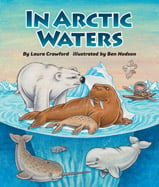Alignment to Standards for SC

| Grade | Number | Standard |
|---|---|---|
| 1 | SC:1-1.1 | Compare, classify, and sequence objects by number, shape, texture, size, color, and motion, using English units of measurement where appropriate. |
| 2 | SC:2-2.3 | distinct environments throughout the world support the life of different types of animals. |
| 2 | SC:2-2.4 | Summarize the interdependence between animals and plants as sources of food and shelter. |
| 2 | SC:2-2.5 | Illustrate the various life cycles of animals (including birth and the stages of development). |
| 3 | SC:3-1.1 | Classify objects by two of their properties (attributes). |
| 3 | SC:3-2.1 | Illustrate the life cycles of seed plants and various animals and summarize how they grow and are adapted to conditions within their habitats. |
| 3 | SC:3-2.2 | Explain how physical and behavioral adaptations allow organisms to survive (including hibernation, defense, locomotion, movement, food obtainment, and camouflage for animals and seed dispersal, color, and response to light for plants). |
| 3 | SC:3-2.3 | Recall the characteristics of an organisms habitat that allow the organism to survive there. |
| 3 | SC:3-2.4 | Explain how changes in the habitats of plants and animals affect their survival. |
| 3 | SC:3-2.5 | simple food chains (including the roles of producers, consumers, and decomposers). |
| 4 | SC:4-2.1 | Classify organisms into major groups (including plants or animals, flowering or nonflowering plants, and vertebrates [fish, amphibians, reptiles, birds, and mammals] or invertebrates) according to their physical characteristics. |
| 4 | SC:4-2.2 | the characteristics of distinct environments (including swamps, rivers and streams, tropical rain forests, deserts, and the polar regions) influence the variety of organisms in each. |
| 4 | SC:4-2.4 | Distinguish between the characteristics of an organism that are inherited and those that are acquired over time. |
| 5 | SC:5-2.2 | composition of an ecosystem, considering both biotic factors (including populations to the level of microorganisms and communities) and abiotic factors. |
| 5 | SC:5-2.3 | characteristics of different ecosystems (including estuaries/salt marshes, oceans, lakes and ponds, forests, and grasslands). |
| 5 | SC:5-2.4 | roles of organisms as they interact and depend on one another through food chains and food webs in an ecosystem, considering producers and consumers (herbivores, carnivores, and omnivores), decomposers (microorganisms, termites, worms, and fu |
| K | SC:K-2.5 | Recognize that all organisms go through stages of growth and change called life cycles. |